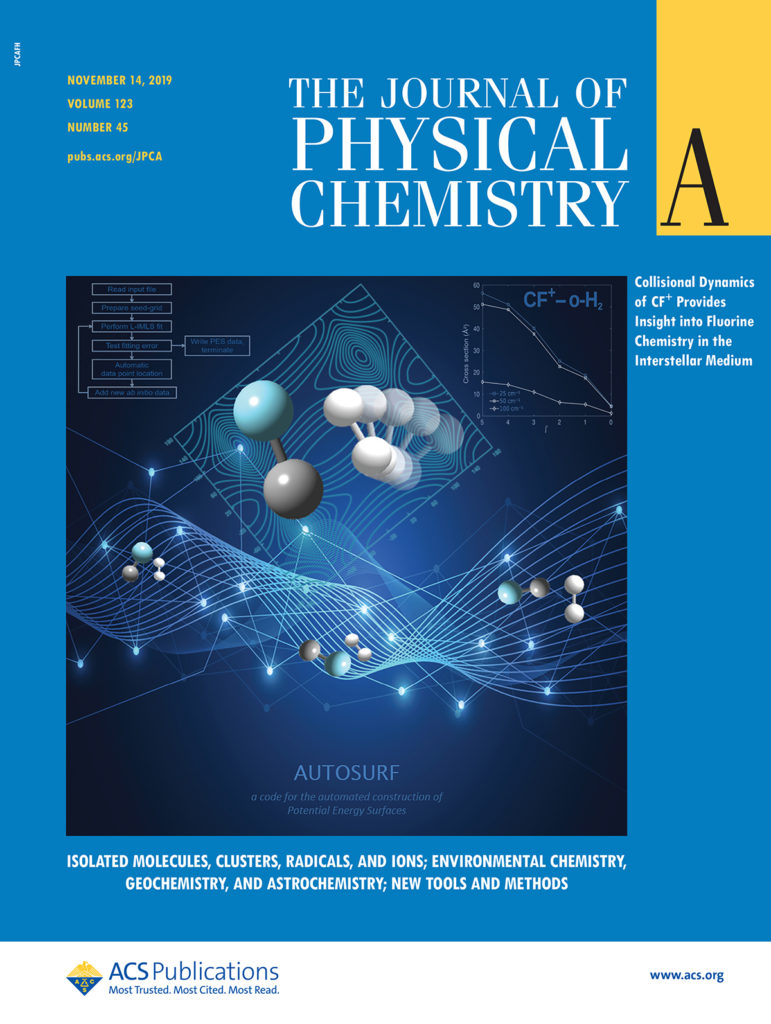Chemistry researchers publish in Journal of Physical Chemistry A
Posted by Velvet Hasner

A study by S&T researchers Dr. Richard Dawes, professor of chemistry, and Dr. Ernesto Quintas-Sánchez, a post doctoral fellow in chemistry, provides new insight and computational modeling that defines the chemistry network of the most reactive element in the Periodic Table, fluorine, in interstellar space.
That space, known as the interstellar medium (ISM), is composed of matter and radiation.
The study, “Collisional Excitation of CF+ by H2: Potential Energy Surface and Rotational Cross Sections,” is published by the American Chemical Society (ACS) in the Nov. 14, 2019, Journal of Physical Chemistry A, and the image Dawes and Quintas-Sánchez created is featured on the cover.
According to Dawes, many standard scientific assumptions about equilibria don’t hold true in the ISM environment due to its low density and cold temperatures, and their study explicitly simulates various collisional processes for the non-equilibrium states that occur there.
“We’ve constructed an automatically generated potential energy surface that enables quantum scattering studies for commonly encountered colliding molecules in this environment,” says Dawes. “Ions such as CF+ (a carbon atom C bonded with a fluorine atom F – missing an electron, it behaves as an ion) tend to interact over much larger distances than neutral molecules and can be difficult to simulate accurately. With the new ‘Autosurf’ software we’ve created, studies like this one will become routine in the future.”
Astrophysicists can use their current findings to determine the rate at which a galaxy depletes its gaseous content and its lifespan of active star formation, Dawes notes.
Computational papers published in the Journal of Physical Chemistry A must provide significant new physical insight into an experimentally relevant system or process or present a new theoretical or computational methodology of general interest.
Additional co-authors of the research are Dr. François Lique, professor of chemistry, and Dr. Benjamin Desrousseaux, postdoctoral researcher, from the University of Le Havre.
